Coworking spaces have become a ubiquitous presence in today’s work landscape, with a staggering 1.93 million people using them in 2020 alone. But how did these shared workspaces come into existence? Let’s take a brief journey through the history of coworking.
1994
The corporate world was dominated by dreary cubicles and fluorescent lights, and while people were working together, the term “coworking” hadn’t even been coined yet.
1995
In Berlin, Germany, a group of 17 computer engineers sought to foster collaboration and knowledge-sharing among their peers. They established a non-profit space called C-Base, or “hackerspace,” equipped with computers for engineers to work on coding projects together. This idea quickly spread to the USA, leading to the emergence of hackerspaces there.
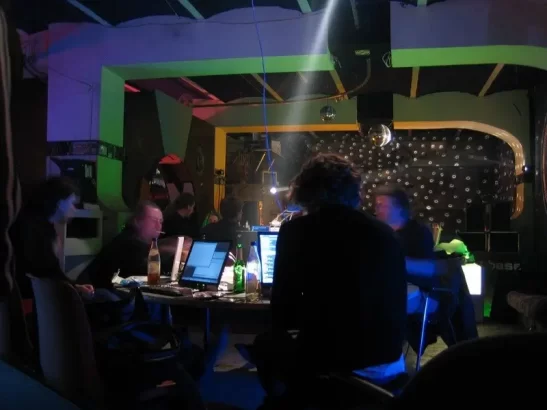
1999
Bernard DeKoven, an American game designer and fun theorist, introduced the term “coworking.” He envisioned it as a way to break down traditional work hierarchies using game design principles to encourage collaboration among equals.
2002
In Vienna, Austria, two entrepreneurs grew tired of working from home and came up with the idea of a shared space for other like-minded entrepreneurs to work and collaborate. They opened “Schraubenfabrik,” attracting a diverse crowd of professionals, from startup founders to architects and PR consultants.
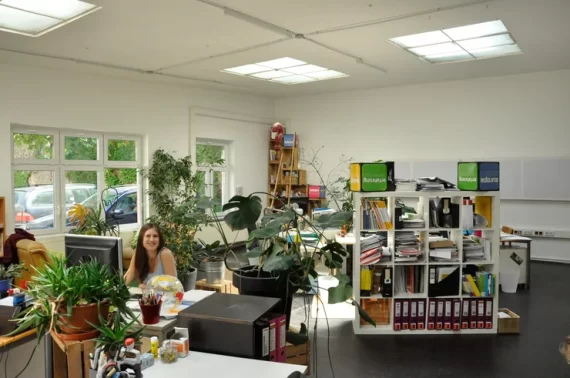
2005
A pivotal moment arrived in when Brad Neuberg founded the “San Francisco Coworking Space” with the vision of creating a social and productive work environment. Initially, the concept faced challenges and saw minimal attendance, but with time, it gained momentum, inspiring similar spaces across the globe in cities like New York, Austin, Phoenix, and London.
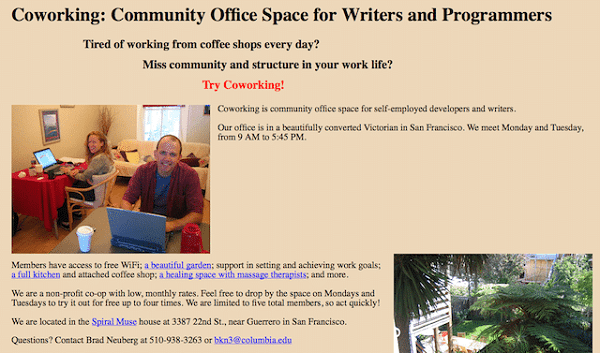
2007
“Coworking” started trending on Google and garnered widespread media attention, leading to the publication of a Wikipedia page dedicated to the growing workplace trend, officially cementing coworking spaces as a recognized phenomenon.
2010
#CoworkingDay was celebrated for the first time on August 9th, becoming an annual tradition thereafter. The movement had grown significantly, boasting 600 coworking spaces worldwide, with over half located in North America.
2011
This year witnessed the rise of WeWork, founded by Adam Neumann and Miguel McKelvey in New York. Their focus on aesthetics, community building, and affordability quickly propelled WeWork into the spotlight, leading to the rapid expansion of multiple coworking spaces across the country, with more than 2,000 spaces globally within a year.
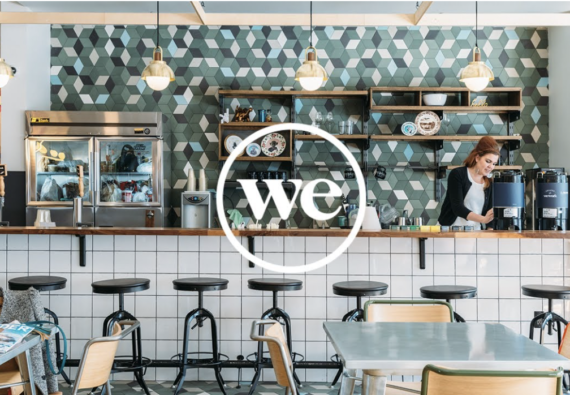
2015
The concept of combining coworking with coliving caught the attention of The New York Times. This idyllic portrayal of coworking while traveling in places like the Canary Islands sparked a trend of digital nomads leaving traditional offices behind to work remotely while exploring the world.

2020
Despite challenges faced during the global lockdowns, where the world seemed to transition entirely to online work and virtual meetings, coworking spaces demonstrated their resilience through flexibility and adaptability. They embraced heightened hygiene measures, reconfigured spaces, and enhanced digital capabilities, ensuring their survival. As the world gradually reopened, remote work became the norm, and coworking spaces began to flourish once again, offering both flexibility and a sense of community to their users.
Present Day 2023
Now the landscape of traditional office spaces is being questioned, and flexible work arrangements have become the norm in numerous companies worldwide. People are seeking environments that offer flexibility and community, and coworking spaces naturally fulfill both these needs.
Looking ahead to 2024 and beyond
The number of coworking spaces worldwide is predicted to reach almost 15,000. The trend of flexible work is set to continue booming, opening up numerous opportunities for diverse and adaptable workspaces. Coworking has firmly established its place in the modern work culture and is here to stay.
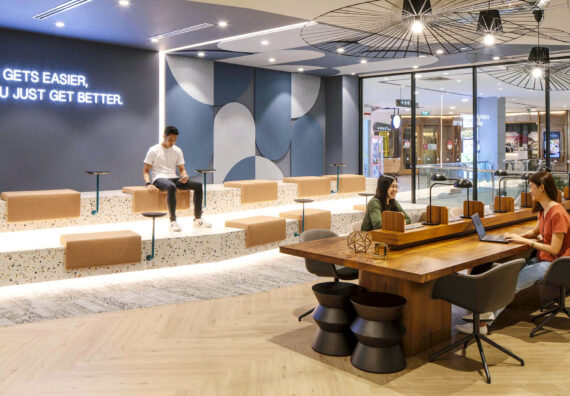
If you’re in Singapore and in search of a great coworking space, I recommend workbuddy! With over 45 coworking spaces in their network, you’re sure to find your perfect workspace. Simply download the workbuddy app and enjoy one week free to try it out!
If your company needs a flexible private dedicated office within a coworking space, I can personally help. Get in touch with me with your requirements here.









What do you think?